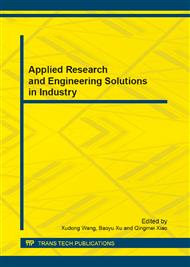p.425
p.429
p.433
p.438
p.445
p.450
p.455
p.460
p.464
Finite Element Simulation of Enhanced Cooling Cutting of Stainless Steel
Abstract:
This paper develops a 2D finite element model for the enhanced cooling cutting of stainless steel. The enhanced cooling effect is modeled with a convective heat transfer coefficient assigned to a heat transfer window of cutting zone. Five convective heat transfer coefficients are defined to simulate different enhanced cooling effects. The simulation results suggest that increase of convective heat transfer coefficient results in a very small reduction of maximum tool-chip interface temperature, even when a very large convective heat transfer coefficient is used. In addition, no significant effect on cutting force and thrust force is observed with the increase of convective heat transfer coefficient.
Info:
Periodical:
Pages:
445-449
Citation:
Online since:
February 2013
Authors:
Price:
Сopyright:
© 2013 Trans Tech Publications Ltd. All Rights Reserved
Share:
Citation:


